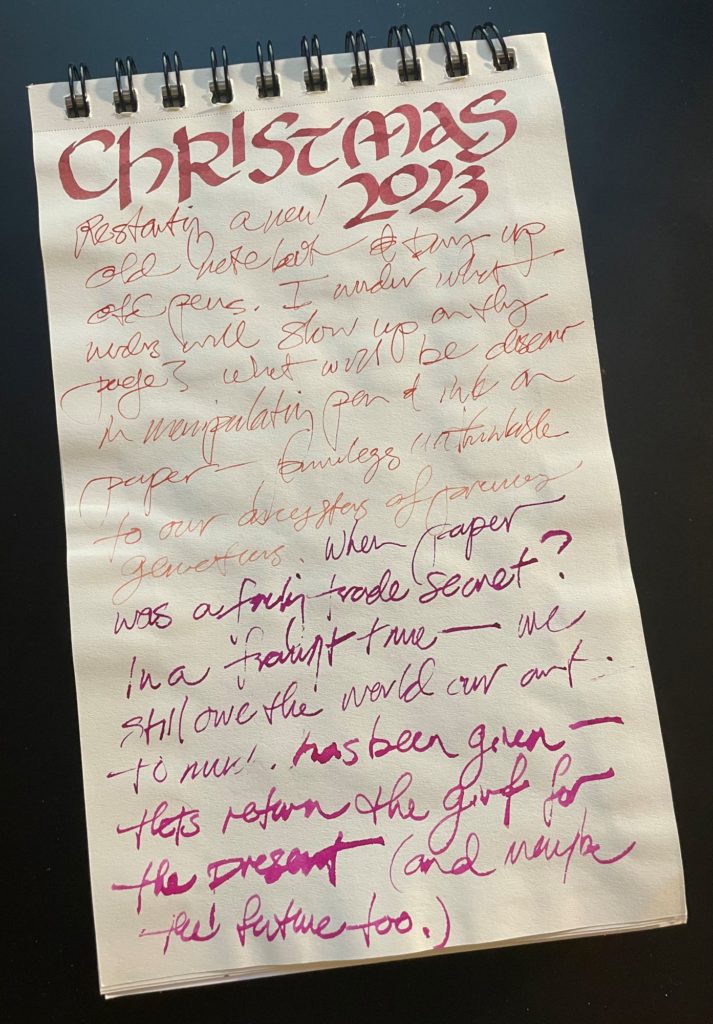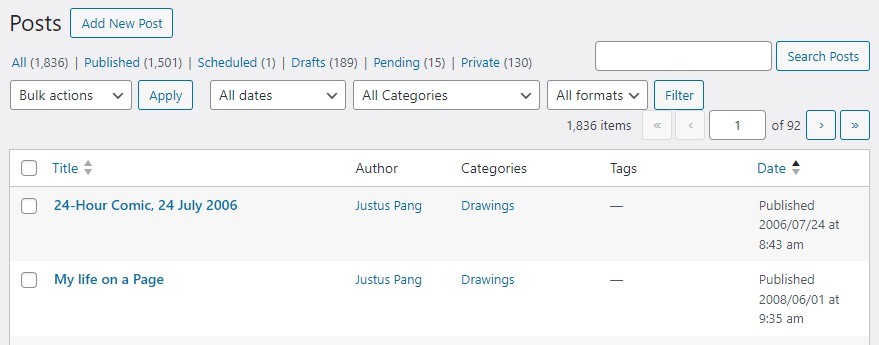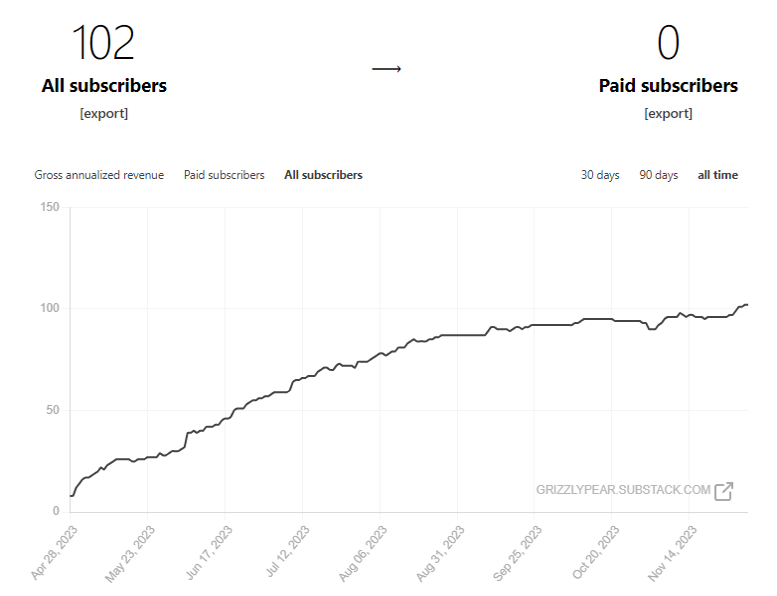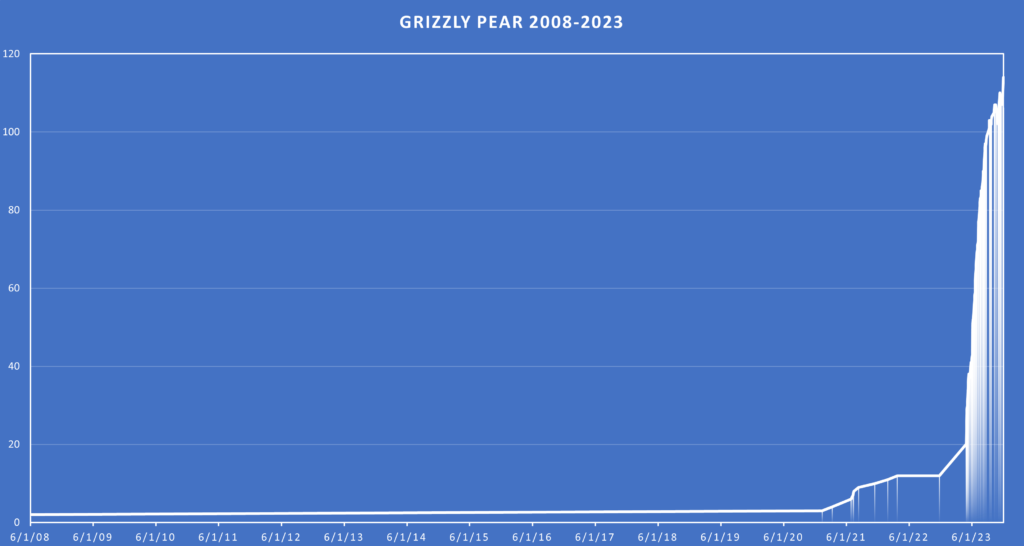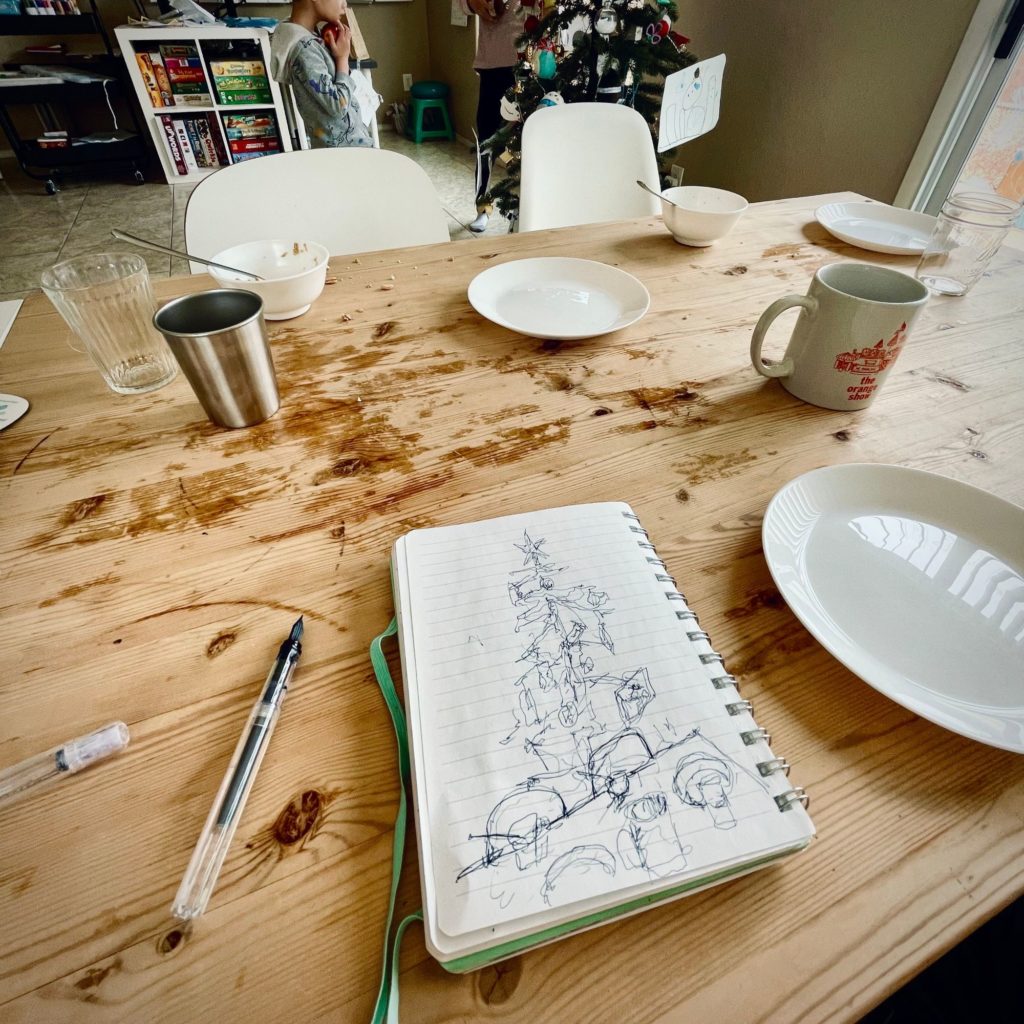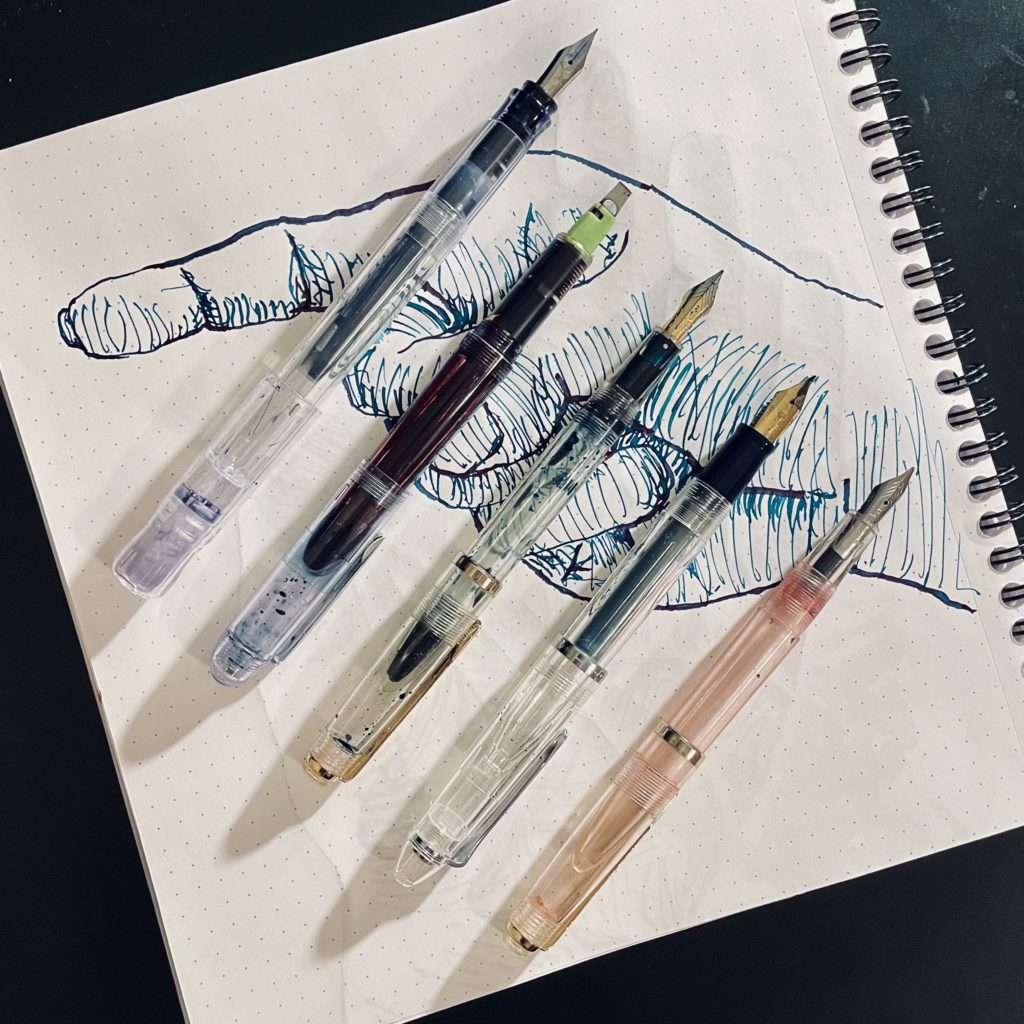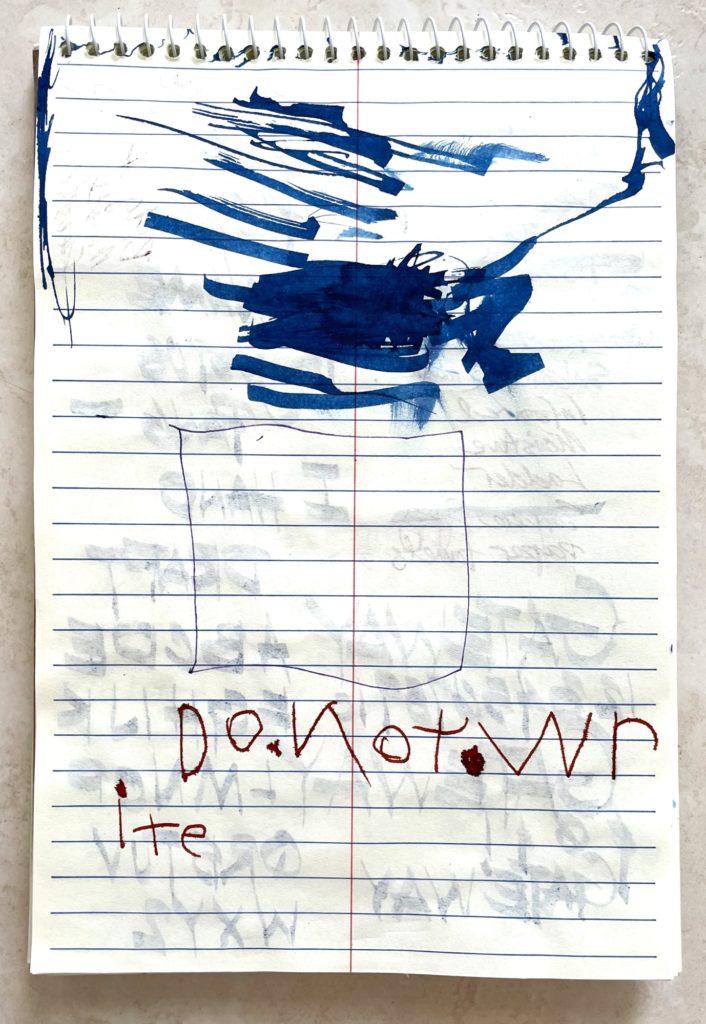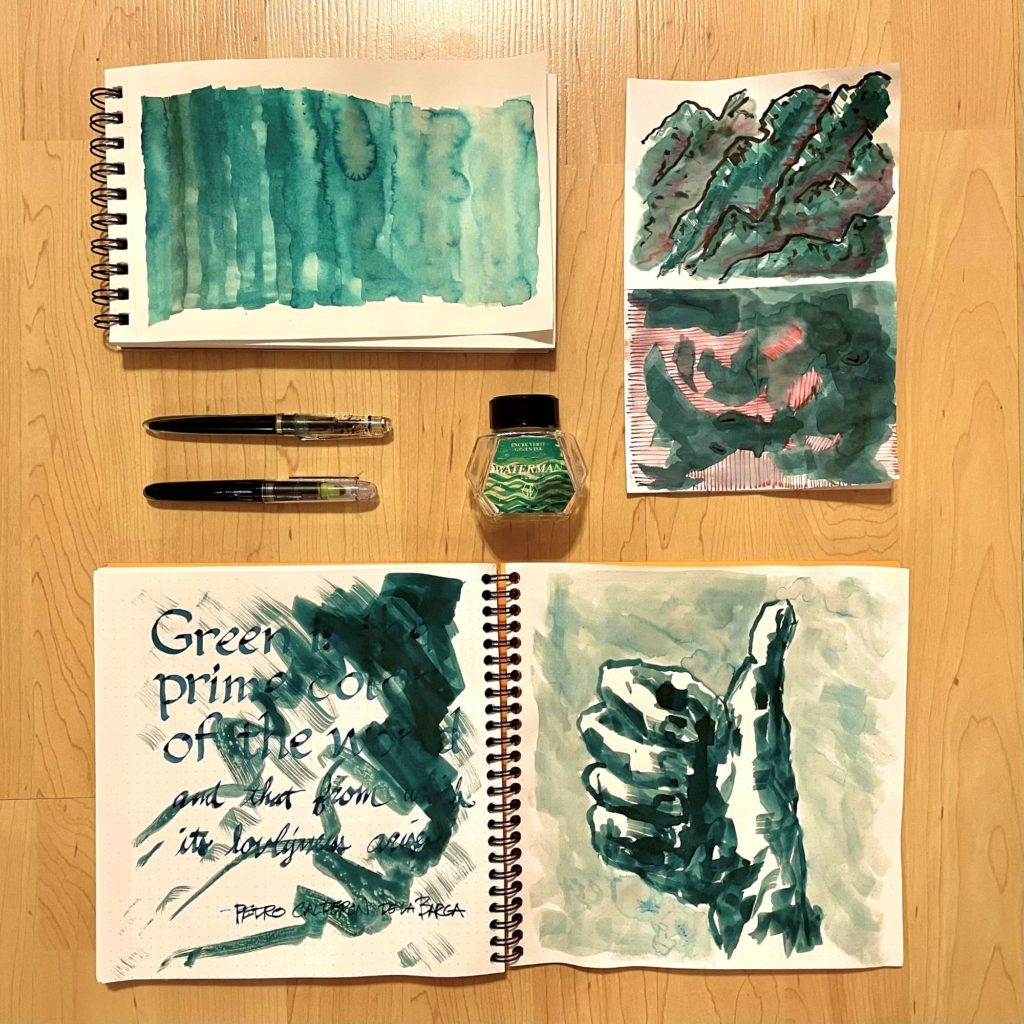This summer I rediscovered fountain pens.
A month later, I had to get better paper. Cheap steno pads are great for work, but they don’t show inks at their finest.
Hedonic treadmill!
Rhodia paper is great (as advertised!) Love the smooth buttery slide. The colors pop. They shade.
Every morning I’d draw a hand in this book. (Whoa! Minus ten pages of doodles, that means I have about a hundred fifty hands in here!)
I barely used the dots. If given a choice I’d go blank. (Then again, it was nice to have guides for the few times I played with calligraphy.)
Absolutely love the square. I don’t have to compose a sketch for the rectangle. 1:1 simplifies the mind before pen strikes paper.
But I’m not tossing out the other sketchbooks. I’m far too cheap to abandon unused paper.
In the meantime, I hope Rhodia keeps making these Reverse Books. (I’ll be back.)
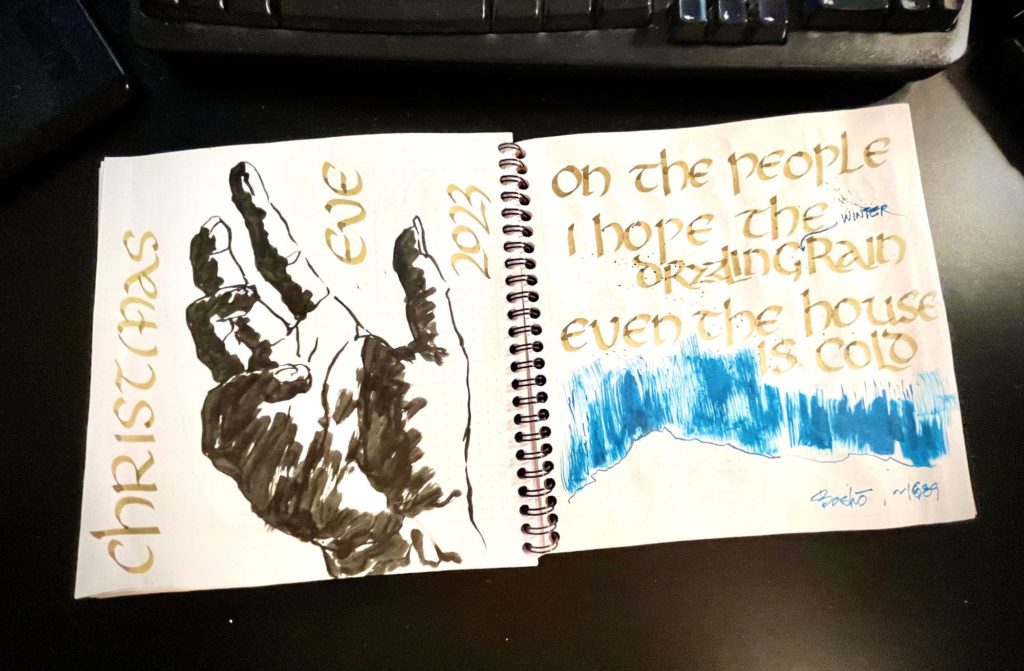
It’s been a good year for my hand. With the new fountain pen habit, I’ve started a morning journal / sketching / calligraphy practice. And worked through several small notebooks (random product show gifts) at the dinner table. I’m slowly getting over my old hangups about sketching.
Much as I hate to admit it, social media+consumerism sometimes hits the spot.
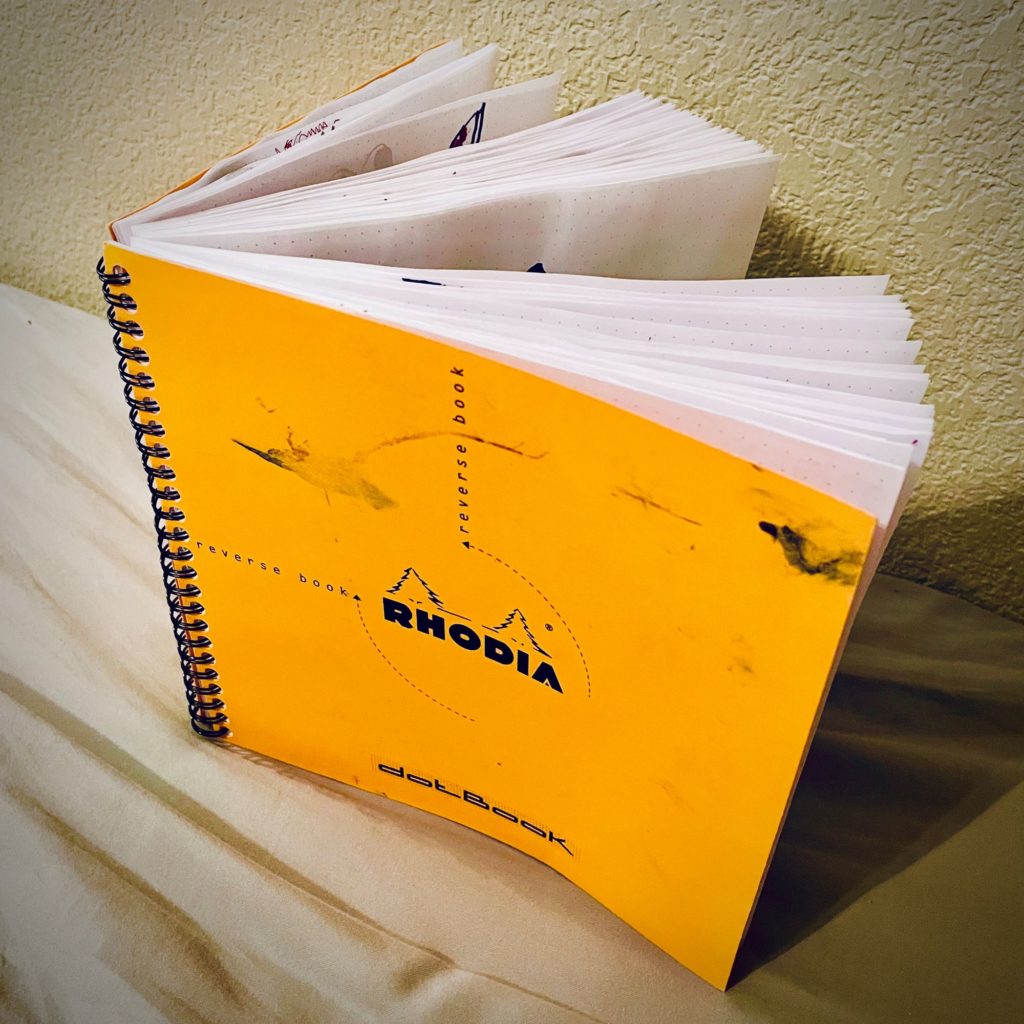
Postscript — I restarted my Blick 5.5″ x8.5″ sketchbook with this note:
Christmas 2023 Restarting a new-old notebook & drying up old pens. I wonder what will show up on these pages? What will be discerned in manipulating pen & ink on paper — privileges unthinkable to our ancestors of previous generations. When paper was a fucking trade secret. In a fraught time — we still owe the world our art. To much has been given — lets return this gift to the present (and maybe the future too.)
